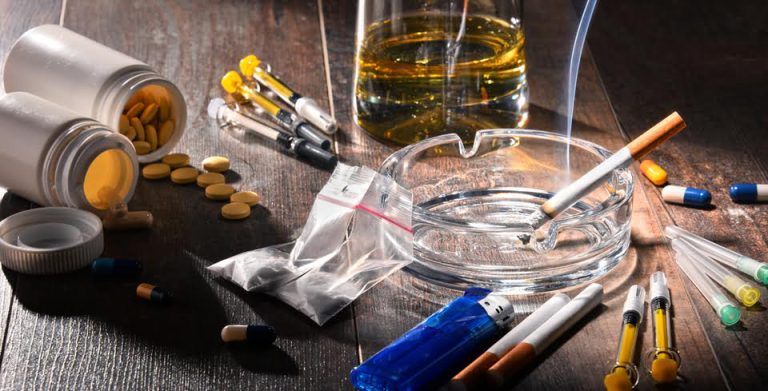Content
- Understand the Risks of Alcohol Abuse
- Alcohol Poisoning Causes
- Relationship between ghrelin levels, alcohol craving, and nutritional status in current alcoholic patients
- Substance Abuse and Addiction Health Center
- Facts You Should Know About Alcohol Intoxication
- Alcohol drinking patterns in young people: a survey-based study
There are gender differences in alcohol-related mortality and morbidity, as well as levels and patterns of alcohol consumption. The percentage of alcohol-attributable deaths among men amounts to 7.7 % of all global deaths compared to 2.6 % of all deaths among women. Total alcohol per capita consumption in 2016 among male and female drinkers worldwide was on average 19.4 litres of pure alcohol for males and 7.0 litres for females. In 1992, the National Highway Transportation and Safety Administration recommended that all states lower their illegal per se blood alcohol concentration levels to 80 mg/dL (0.08%).
AUD is a clinical diagnosis, and laboratory tests are not usually required, although they may provide evidence of problematic alcohol use in patients who cannot provide a conclusive history. & Verster, J. C. The impact of expectancy on cognitive performance during alcohol hangover. & Coyle, K. Next day effects of a normal night’s drinking on memory and psychomotor performance.
Understand the Risks of Alcohol Abuse
The result of these direct effects is a wave of further indirect effects involving a variety of other neurotransmitter and neuropeptide systems, leading finally to the behavioural or symptomatic effects of alcohol intoxication. Symptoms of intoxication at lower doses may include mild sedation and poor coordination.
- Tolerance is caused by adaptational changes of central nervous system cells and by induction of metabolic enzymes.
- Inhibition of alcohol dehydrogenase with ethanol may be substituted for treatment with fomepizole , though studies have highlighted the greater safety of fomepizole as a treatment, when available.
- We link primary sources — including studies, scientific references, and statistics — within each article and also list them in the resources section at the bottom of our articles.
- In the hangover group, participants additionally rated the severity of 24 hangover symptoms on an 11-point Likert scale, which reached from 0 (non-existent) to 10 , at the beginning of both their sober and their hangover appointment.
- As suggested before, more research on how alcohol hangover affects motor response sequence learning is needed.
The present review will focus on clinical features, diagnostic criteria and treatment strategies of AAI. Partly opposing our initial hypotheses, we found stronger intoxication-related impairments when motor response sequence automatization was possible as compared to when it was not possible. Alcohol hangover had no impact on automated or controlled processes . In other words, the formation and benefit of new habits/automatisms was still possible under the influence of alcohol, albeit at a generally lower level during acute intoxication. The fact that we found this ESD result pattern to be more likely to be reflected in the MSD measure suggests that these intoxication-related impairments mainly arose from deficits in processes related to motor response sequence execution . That is, intoxication was more detrimental to the automatization of motor response sequence execution than being sober or hungover.
Alcohol Poisoning Causes
Patients with alcohol use disorder may not benefit from IV fluids, and consideration must be made for alcoholic cardiomyopathy in this patient population before administering fluids. Some patients may become agitated or violent. In these situations, sedative substances may be required, including droperidol or haloperidol, keeping in mind the potential interaction between the drug and alcohol. Depending on the severity of the intoxication and complications such as Wernicke encephalopathy, alcoholic hepatitis, or dysrhythmias, patients may have to be admitted to the hospital for further treatment. Alcohol intoxication typically begins after two or more alcoholic drinks.
- Confirmation by breath or blood alcohol levels is useful for legal purposes .
- Patients with acute intoxication may exhibit “holiday heart,” in which dysrhythmias, especially atrial fibrillation, occur following a heavy drinking episode.
- After the needle is inserted, a small amount of blood will be collected into a test tube or vial.
- In order to keep the results section concise, we only report the outcomes of the two three-way interactions of interest that were found to be relevant for the ESD measure.
- Patients with ethanol intoxication can usually be observed until they are no longer clinically intoxicated and then discharged.
People who develop tolerance may reach an incredibly high blood alcohol content . However, ethanol tolerance is incomplete, and considerable intoxication and impairment occur with a large enough amount. But even these drinkers may die of respiratory depression secondary to alcohol overdose. Acute alcohol intoxication causes several metabolic abnormalities, including lactic acidosis, hypoglycemia, hypokalemia, hypomagnesemia, hypocalcemia, and hypophosphatemia. Laboratory analysis should include a full electrolyte panel as well as liver function tests. Alcohol can cause acute effects on the cardiovascular system, such as atrial and ventricular tachydysrhythmias. One particular syndrome is known as “holiday heart syndrome,” can develop, which is characterized by new-onset arrhythmias following acute ingestion of alcohol and can include new-onset atrial fibrillation.
Relationship between ghrelin levels, alcohol craving, and nutritional status in current alcoholic patients
All participants were explicitly asked to come forward when subjectively having reached the legal driving limit. The first BrAC measurement took place either when study participants reported to have reached this level, or after 45–60 min from the start of alcohol consumption. For safety reasons and to obtain serial measurements, repeated BrAC breathalyser measurements were obtained every 45–60 min throughout the process of alcohol consumption using an AlcoQuant® 6020 + device by EnviteC/Honeywell . To avoid technical artifacts and standardize measurements, an obligatory 15-min nil by mouth interval was adhered to prior to each BrAC measurement—as per manufacturer’s recommendation. Data were included for analysis only when both, a BrAC measurement and a corresponding self-estimation, were documented. To determine the most likely source of the obtained ESD effects, we subsequently ran the same mixed ANOVA separately for RT1 and for MSD.
How many beers before you fail a breathalyzer?
For every one drink, your BAC goes up by about 0.02 percent, so reaching a BAC of 0.08 percent takes about four to five drinks.
EMedicineHealth does not provide medical advice, diagnosis or treatment. stages of alcohol intoxication A person may have a seizure disorder and require medications.
Substance Abuse and Addiction Health Center
But in some cases, people with this condition might have accidentally or intentionally drank household products containing alcohol, such as mouthwash or vanilla extract. The blood alcohol content for legal operation of a vehicle is typically measured as a percentage of a unit volume of blood.

